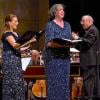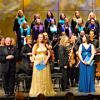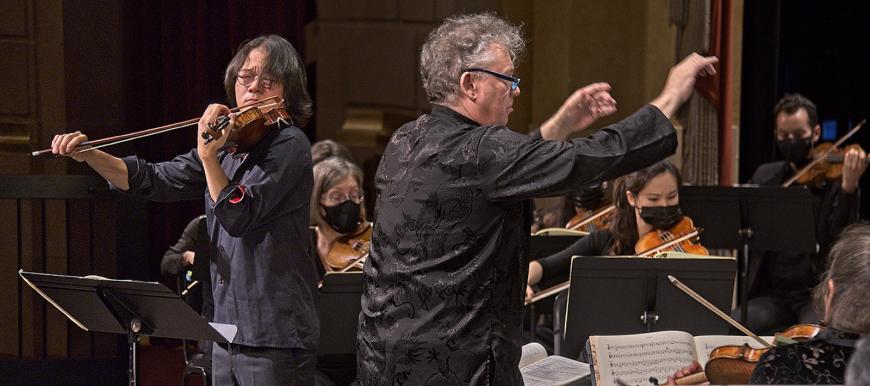
Philharmonia Baroque Orchestra was looking for continuity when they selected new Music Director Richard Egarr. And the first concerts of the new season, last weekend, after the pandemic delayed the baton-passing, showed they got what they wanted. The orchestra broke from the gate in full stride, the new jockey riding just as buoyantly as the old one in a concert featuring two exhilarating Robert Schumann works, the Violin Concerto and the Second Symphony.
Which is not to say that there were no differences on display. As the orchestra streaked into the Second Symphony scherzo's coda, the theme suddenly reversing and rocketing up the scale, the violinists stood up from their seats in what I received as pure delight and showmanship. This symphony tests an orchestra’s string section and PBO was on top of it, enveloping Berkeley’s First Congregational Church (not known for its acoustic warmth) in as plush a sound as I’ve ever heard from the group. Meanwhile, the intricacies of Schumann’s wind writing were taken up crisply by the veteran Philharmonia winds, now buttressed by new talent including flutist Kathie Stewart (a mainstay of Apollo’s Fire), principal flute Joe Monticello, and principal clarinet Thomas Carroll.
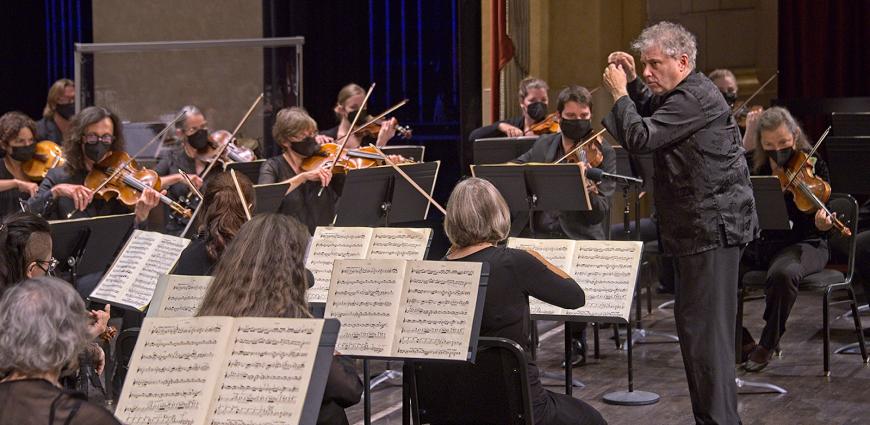
Egarr is an affable personality, introducing the music with insight, and leading a demonstration the three themes of the “Fuga a tre soggetti,” from J.S. Bach’s Art of Fugue at the concert’s outset. Like Nicholas McGegan, his predecessor, he has a flair for the dramatic, allowing this unfinished fugue to peter out instead of ending it at the close of the previous, finished section. Also like McGegan, Egarr conducts without a baton and punches accents with fervor, connecting with the players on a gut level. But Egarr is also an appreciator of structure, and his readings of these scores were highly revealing in their scrupulous attention to contrapuntal detail. (And although he was brief in his remarks, you sensed that he could spend hours pointing out the quotes and devices in these scores.)
The Netherlands-based Egarr also used his connections to bring in violinist Shunske Sato as soloist in the violin concerto. Sato is concertmaster of both the Netherlands Bach Society and Concerto Köln, as well as doing modern repertory. He’s recorded Paganini with the Academy of Ancient Music, and that served him well here.
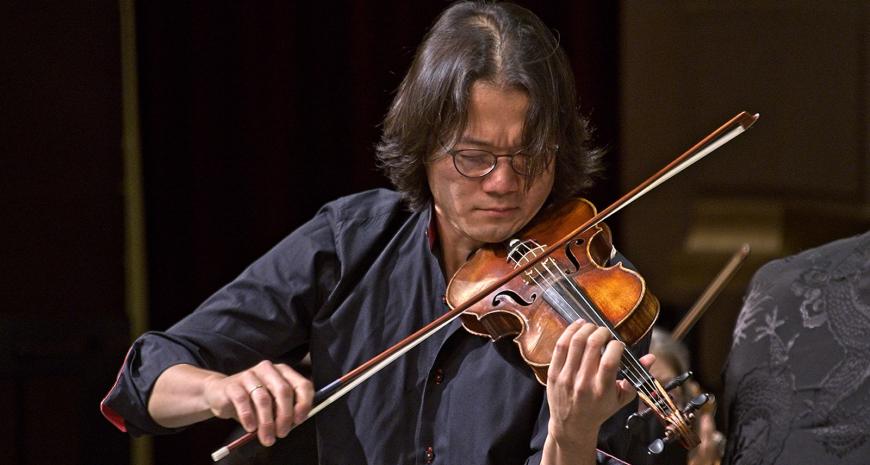
Sato possesses a beautiful tone and (obviously) impeccable technique, but his well-judged rubato and, even more important, generous use of portamento (sliding from note to note) made the case, all by themselves, for playing Schumann with a sense of period style. In a lovely moment in the concerto’s middle movement, Sato handed off the spotlight gently to cellist William Skeen, who played with the same feeling and sent the melody back, the two musicians connecting with both eyes and ears. If you’re going to explore Schumann’s music — any of it — you have to be alive to the moments of poetry like this one, and also formal experiments.
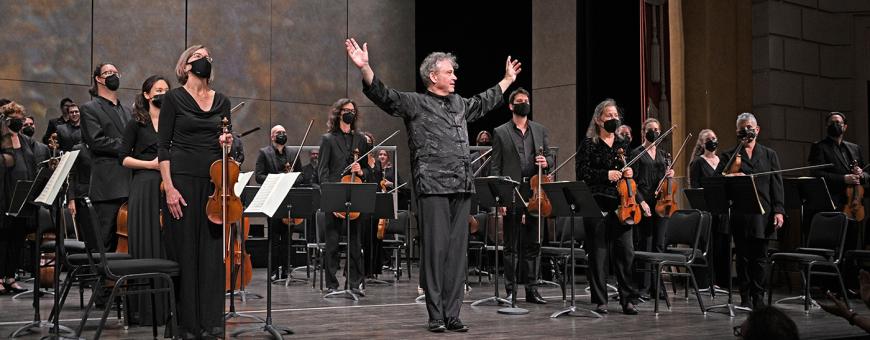
That’s particularly true of the Second Symphony’s end-weighted fourth movement, which makes some determined breaks with received ideas of form and introduces a poetic allusion to Clara Schumann, in a Beethoven song quotation (also used in Schumann’s Piano Fantasy), that plays a major role in the score. Egarr and the orchestra moved through this finale with fire, while also appreciating the music’s detours. The coda, which lets the festive trumpet calls ring out in triumph, made an impressive assertion that the orchestra is back live and in great shape.



